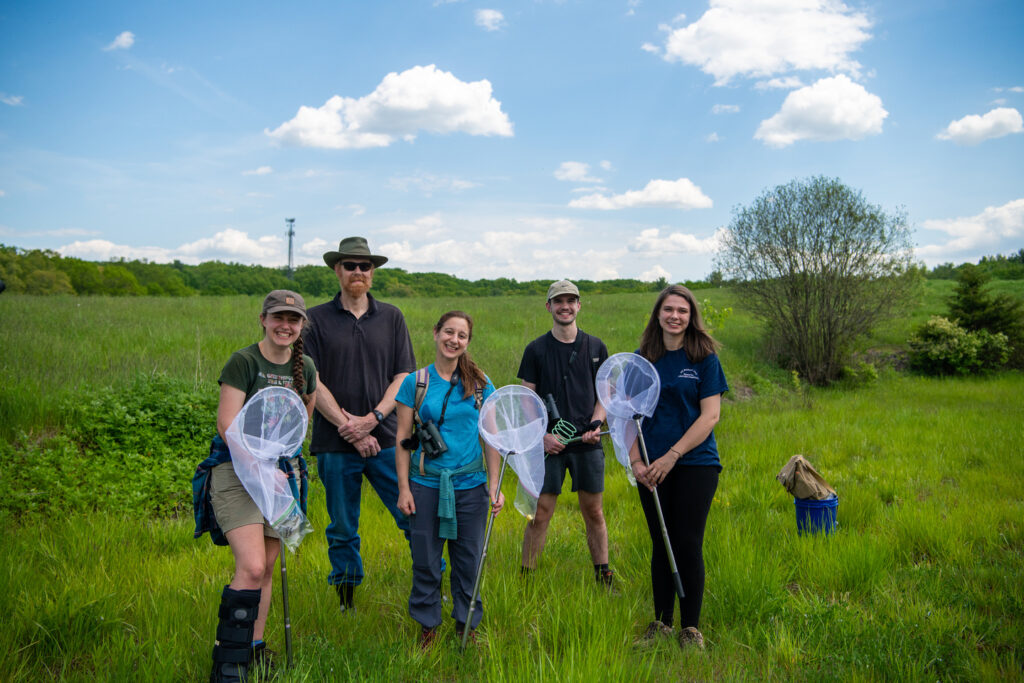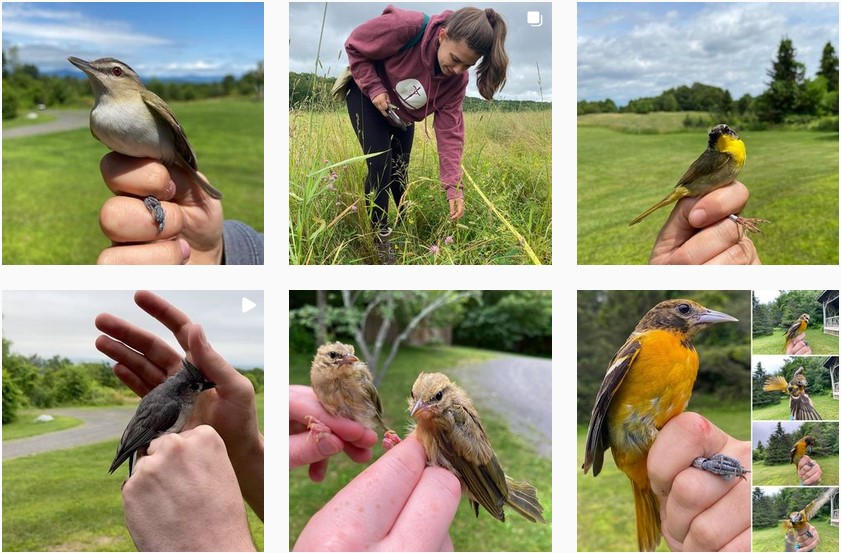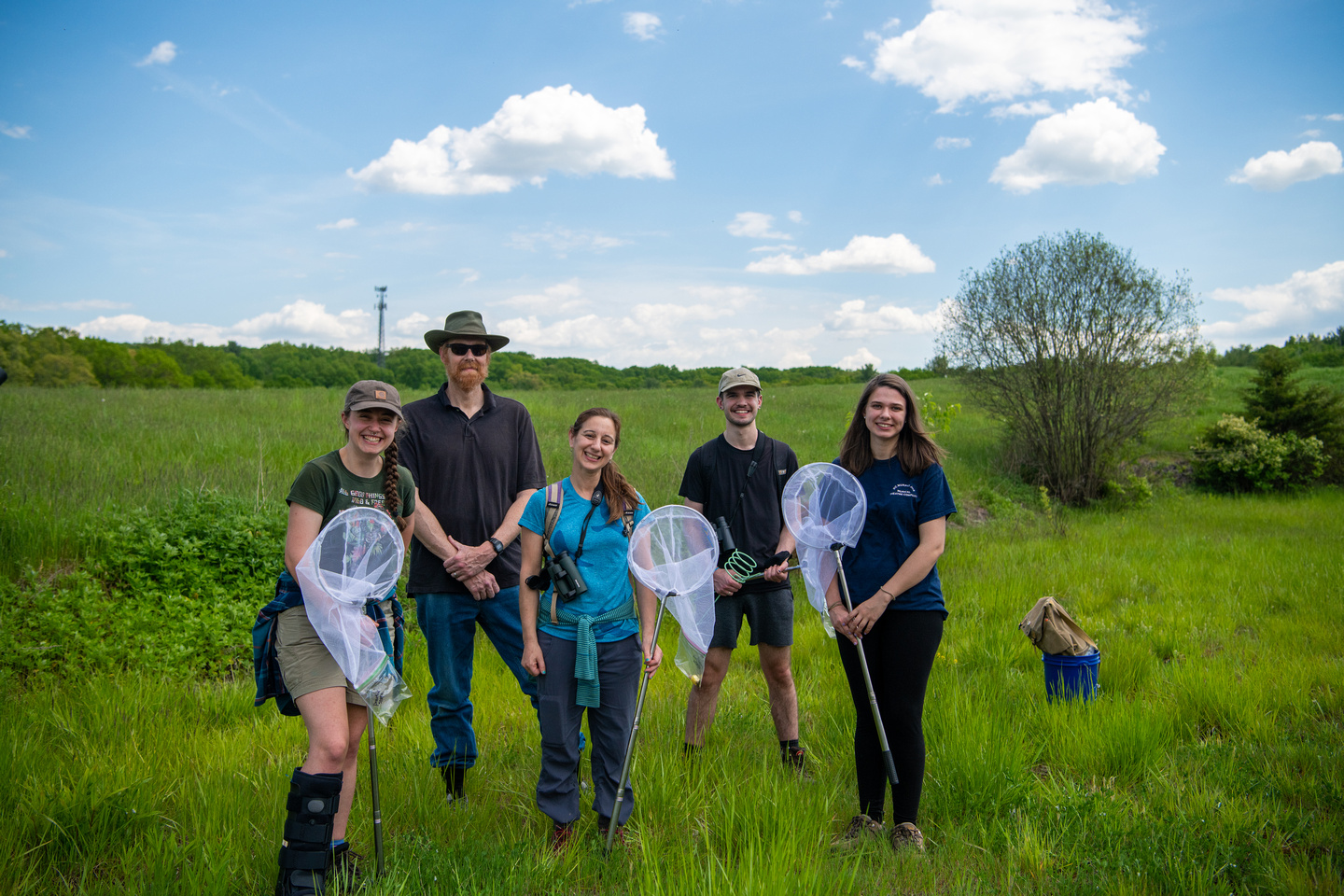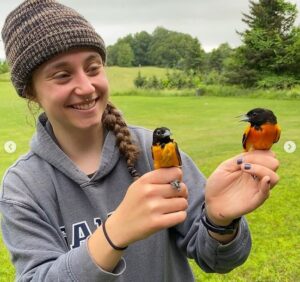Can solar panels coexist with birds and bees? This team of SUNY New Paltz researchers is looking for answers

New York is emerging as a leader in the movement toward more sustainable energy production. The state has committed to achieving 70% renewable energy by 2030 and zero-emission electricity by 2040, and is backing those commitments up with large-scale investment in solar, wind and other renewable infrastructure.
But what happens to the wildlife where we build this renewable energy infrastructure? Can solar arrays and other green infrastructure coexist with the plants, animals and ecosystems that already call these spaces home?
A SUNY New Paltz research team led by Associate Professor of Biology Kara Belinsky is measuring that impact right here in New Paltz. They’re looking for ways to mitigate potential harmful effects of new solar array construction on our state’s grassland birds and insect pollinators.
The project, a collaboration with Walden Environmental Engineering, has the potential to affect much more than just this one local solar installation. The team’s findings could inform green energy development across the state, as New York accelerates toward its climate commitments over the next decade and beyond.
“If you think about solar energy development, it’s really good from a climate change, renewable energy perspective. But if generating solar energy takes habitat away from wildlife, that makes it more of a win-lose situation. Our research could help make solar development better for threatened organisms like grassland birds and insect pollinators that are important to ecosystems across New York.” – Kara Belinsky, associate professor of biology

The work began this summer with a small team of faculty and undergraduate student researchers at a field in New Paltz, the site of a closed and capped former landfill, where construction will soon begin on a solar panel array that would become a major renewable energy supplier for the local community.
The research is taking place in three phases:
1) In summer 2021, the team is identifying bird and insect species at the site, taking baseline measurements before solar array construction begins. Belinsky, a specialist in ornithology, brought on Associate Professor Aaron Haselton, an entomologist, and Lecturer Laura Wyeth to help identify insects (primarily bees) and flowering plants used by pollinators, respectively.
2) They’ll use what they learn to make recommendations to the engineers and contractors who will design the solar arrays.
3) After construction, Belinsky’s team will return to the site to check in on the wildlife and see how the birds and insect species are managing in their transformed habitat.
While this is a faculty-directed research project, undergraduate student researchers are making key contributions, conducting most of the bird, insect and plant sampling in the field and identifying those specimens in campus labs.
That kind of student-faculty collaboration is nothing new for the New Paltz Biology Department, which provides a wide range of fieldwork opportunities to aspiring ecologists as part of its core mission.
The approach helps students like Kristyn Gessner ’21 (Biology) of Pleasant Valley, New York, find their passions and refine their goals. Gessner knew she was interested in animal behavior before she came to New Paltz, but she wasn’t always sure what she would do with that interest. She credits Belinsky with helping her channel that passion and get involved with research from their very first conversation.
“I love being outdoors, but until I started working with Dr. Belinsky I didn’t know that there was a way for me to overlap those experiences with animal behavior,” Gessner said. “She invited me immediately, like a couple weeks after my first semester ended. I was shocked – I didn’t know freshmen got to do research here.”
The opportunity was a game-changer. Gessner discovered she had an affinity for the work – her natural empathy for the animals and their experiences was evident from day one.
“As soon as I started handling these birds, having these personal experiences with what are essentially wild animals, and realizing that most people will never have these experiences, it just took my heart. That was one of the first takeaways for me – this bird is really scared, and its life is in my hands. I have to be completely focused on the bird, do what needs to be done and then release it.” – Kristyn Gessner ’21
The study is still in its early stages, but when these researchers talk about their work this summer, you get a clear sense of optimism.
This project’s potential lies not only in the knowledge it might uncover, but in the collaborative model – bringing scientists, students, engineers, and state and local government together in pursuit of common goals.
“It’s a time to talk about new beginnings,” Belinsky said. “I think the pandemic made many of us think about how the world could be made better. The initial excitement of a project like this is that there’s hope of ideas coming together to deal with climate change. It feels like our study could be part of that momentum.”
“To meet the challenges we’re facing in environmental science, you need everybody to get involved and work together,” Gessner added.
Being at the beginning of a career in science can feel overwhelming, but Gessner says it’s liberating, too. Although her role in this project is wrapping up this summer, she’s excited about opportunities to work in other parts of the world, with other kinds of animals, learning new skills and methods.
“One thing Dr. Belinsky always encourages us to do is, find a project that has something you’re already good at, but also something totally new,” Gessner said. “That advice has been really important for me. I want to cast my net wide and experience as many different species as possible.”
Kristyn Gessner took us through a day-in-the-life of a New Paltz undergraduate researcher for our Instagram Stories @sunynewpaltz.
This research is supported by the NYSERDA Environmental Research Program, which aims to increase the understanding and awareness of the environmental and public health impacts of energy choices and emerging energy options, and provide a scientific foundation for creating effective and equitable energy-related environmental policies and resource management practices.
New York State’s clean energy and climate agenda was passed into law with the 2019 Climate Leadership and Community Protection Act. Learn more at https://climate.ny.gov/.


